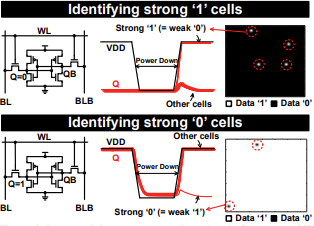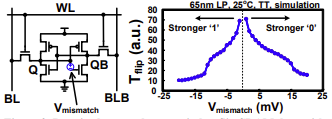The Data Remanence Technique for enhanced data encryption
A data remanence based approach for reliable key extraction from SRAM memory cells.


Applications
- Cybersecurity
- Data encryption
Technology Overview
In the pursuit of secure and unclonable encryption key generation, SRAM (Static Random-Access Memory) cells have emerged as an exceptional candidate. Their unique, random, and unclonable nature, stemming from inherent process mismatch among transistors, makes SRAM an attractive choice. However, the primary challenge facing SRAM-based key generation has been its susceptibility to instability in the presence of random noise, temperature variations, voltage fluctuations, and device aging.
To address this challenge, Researchers at the University of Minnesota have developed a data remanence based approach known as the Data Remanence Technique. This innovative approach simplifies the identification of stable SRAM cells for reliable key generation by reducing testing time and hardware requirements. Unlike previous methods, such as Temporal Majority Voting (TMV), which are resource-intensive and time-consuming, the Data Remanence Technique only requires two remanence tests, simplifying the process. It works by initially writing the entire SRAM array with '1' or '0', followed by a momentary power shutdown until a few cells flip. The technique leverages the fact that the cells that are easily flipped are the most robust cells when written with the opposite data, offering a unique and efficient solution for stable key generation. Experimental studies demonstrate that the 256-bit keys generated using this approach from a 512 kbit SRAM exhibit 100% stability under varying conditions, including temperature fluctuations, power ramp-up times, and device aging. The Data Remanence Technique is an innovative solution for secure key generation, leveraging the inherent unpredictability of SRAM cells to ensure that encryption keys remain resilient despite external challenges, ultimately safeguarding critical data assets.
Phase of Development
TRL: 3-4The Data Remanence Technique has been experimentally verified in commercial SRAM chips.
Desired Partnerships
This technology is now available for:- License
- Sponsored research
- Co-development
Please contact our office to share your business’ needs and learn more.
Researchers
- Chris Kim, PhD Distinguished McKnight University Professor, Department of Electrical and Computer Engineering
- Keshab Parhi, PhD Distinguished McKnight University Professor, Department of Electrical and Computer Engineering
-
expand_more library_books References (1)
- Muqing Liu; Chen Zhou; Qianying Tang; Keshab K. Parhi; Chris H. Kim (2017), A data remanence based approach to generate 100% stable keys from an SRAM physical unclonable function, 2017 IEEE/ACM International Symposium on Low Power Electronics and Design (ISLPED), Taipei, Taiwan, 1-6
-
expand_more cloud_download Supporting documents (1)Product brochureThe Data Remanence Technique for enhanced data encryption.pdf